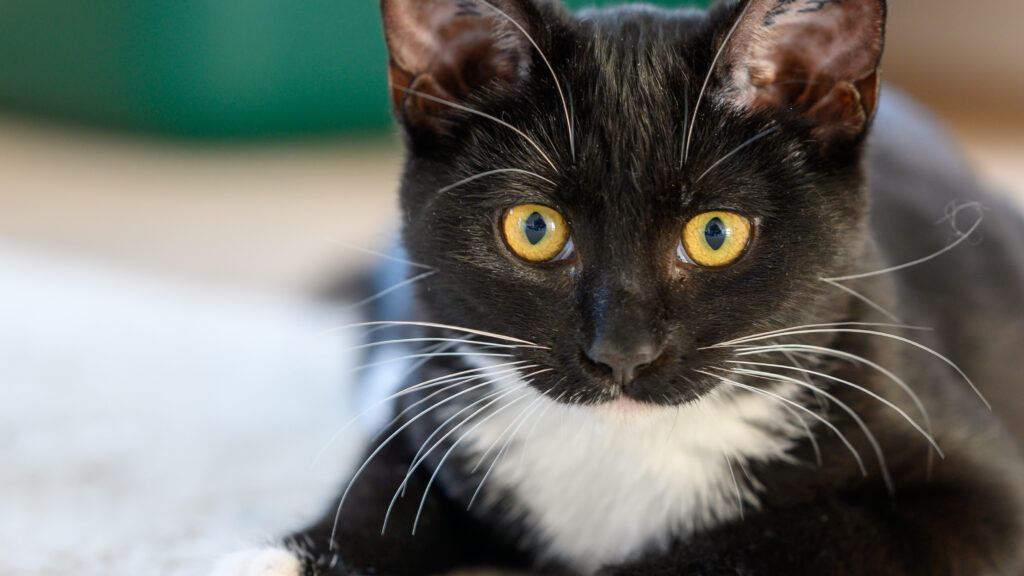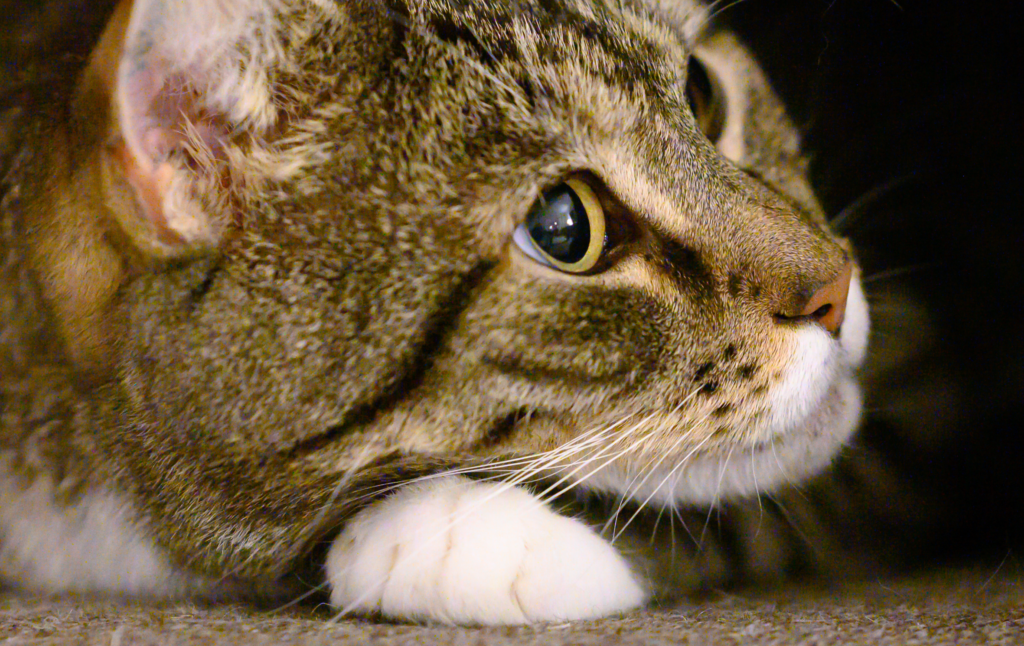Introduction
An 85mm lens is the classic focal length for portraiture, but I use it for many other purposes. If you are in the market for an 85mm prime, this could be your lens, but let me start with five cons before we get to the pros.
Price
First, this lens is not cheap. It may be because I am used to all the budget friendly high quality NIKKOR vintage lens glass, but a price around 670 EUR for my copy February 2022 is to me a lot of money. Here in October 2022, I found a used copy over at MPB for 650 EUR and Amazon offers a new copy for around 700 USD. Btw, this day and age the Dollar and the Euro is about the same.
Speed
Secondly, this lens is not super-fast. At 1.8 you may want more, say f/1.4 or f/1.2 and here we are in personal preference territory. I will say that I find that I can get a lot of background blur even when the subject and the background are close. But if you need a faster lens than 1.8, then obviously this is not the lens for you.
Appearance and Features
Third, if the look and feel of the lens is important to you, then this lens may disappoint, especially if you are used to the vintage lenses – all metal, all glass, made in Japan. This lens is not bad in terms of build quality or appearance, but I think many will find it a bit boring, like sticking your tung out the window; it doesn’t really taste of anything.
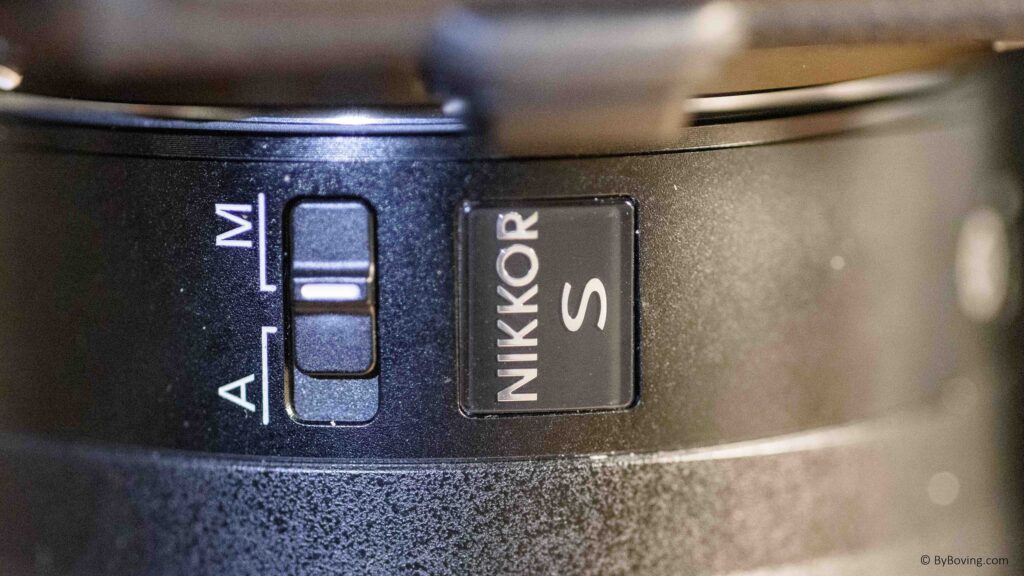
There is a switch to move between manual and automatic focus plus a large configurable control ring, but other than that the lens is just a black metal tube with a flimsy lens hood made of plastic. That’s it. No golden ring. No programmable buttons. No switch for vibration reduction, as it has none and you must rely on the VR in the camera body. Just a weather sealed black tube.
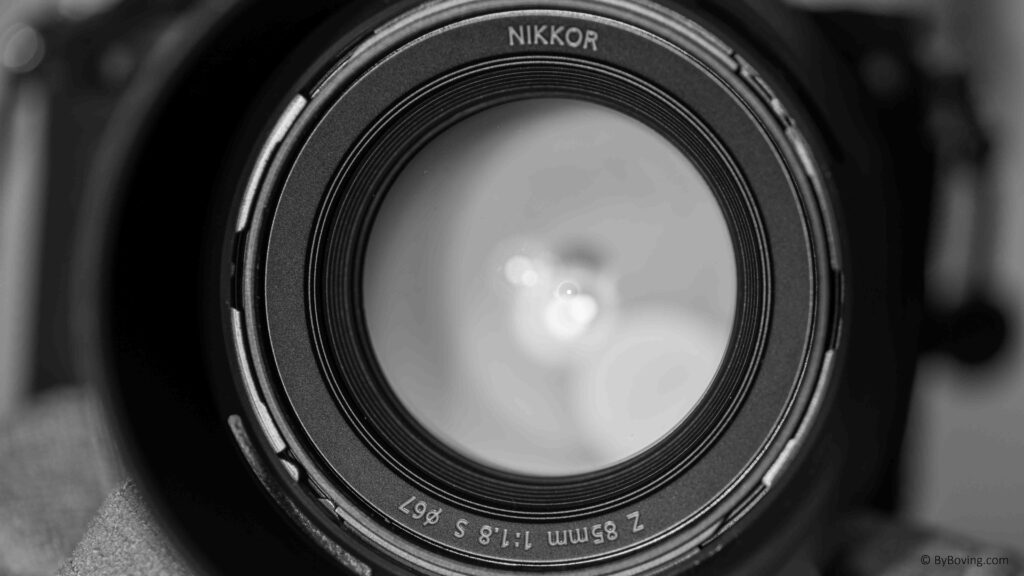
Minimum focus distance
Fourth, the minimum focus distance is 0.8 meter which is way too much for me – I want to get closer to my subject. If you are like me, the 105 macro lens is worth a consideration as it has a minimum focus distance of 0.3 meters.
Focus breathing
Finally, if you are a videographer, you may not like the focus breathing this lens has. It is significant. When you move the focal plane, it changes the field of view so much that you avertedly may think that you are working with a zoom lens. This is normally not a problem for photographers, but if you are a videographer, you will not like this “feature”.
Sharpness and contrast
So, why did I then buy the lens anyway? Well, let me say that if there is an academy where they teach lens designers what a MTF chart for an outstanding lens looks like, they could pull out this chart as an example for the students.
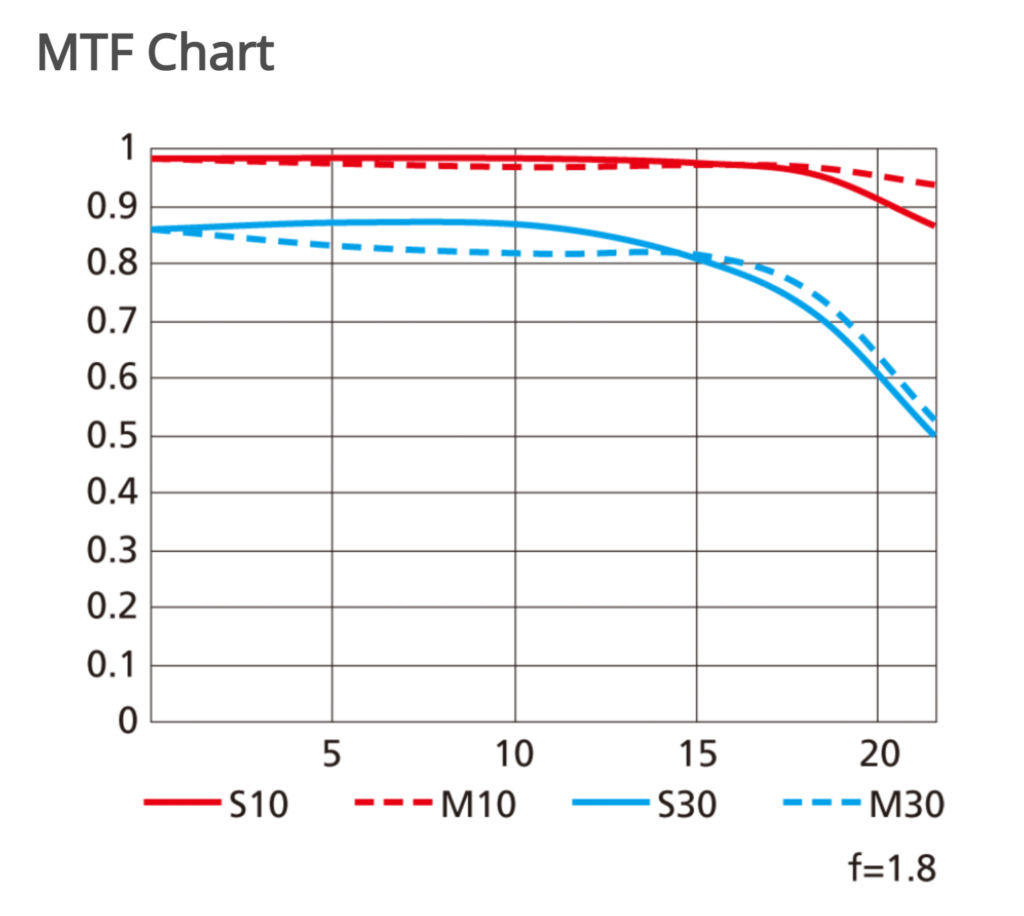
But this is not a theoretical example, this is the MTF chart for this lens. This is outstanding performance in terms of both sharpness and contrast. Centre to edge. If you don’t believe me or don’t know what a MTF chart is, see here the words of DXOmark. They test lenses and sensors day in and day out:
“We tested the Nikkor Z 85mm f/1.8 S on the high-resolution Nikon Z7, where the lens combined with the 47 MP sensor achieved a DXOMARK score of 49. This short tele has very high and uniform sharpness at all apertures and ranks as one the best performing NIKKORs in our database.”
Notice especially the last part “one the best performing NIKKORs in our database”
And DXOMar continue: “Overall, this Nikkor lens is a top-tier performer which can rival more expensive models in optical quality.”
This lens is a top performer. Full stop.
Chromatic Aberrations
One of my few party tricks is that I can get any lens to exhibit purple fringing. The reason being that I shoot a lot into the sun. And in high contrast areas almost any lens, especially wide open and in the corners, will yield chromatic aberration. This lens is no exception, but it is by far the best controlled aberrations I have ever seen. Only in the corners was I able to squeeze purple out of it, and you really have to pixel peep to see it.

Distortion and vignetting
The lens has very little distortion and vignetting and whatever is there, is automatically corrected. You need to switch off the correction in post in order to see it. I doubt you will shoot architecture with an 85mm lens, but if you do, I doubt distortion and vignetting will be an issue for you.
Flare control
Nikon has thrown all its coating technology into this lens, and flare is probably some of the best controlled I have seen in a lens. Videographers love flare and will not like the suppression this lens provides, but as a photographer I am happy with the results this lens yeilds.
Bokeh and sunstars
The lens comes with 9 rounded blades, and I appreciate that rounded blades are necessary to get good bokeh.
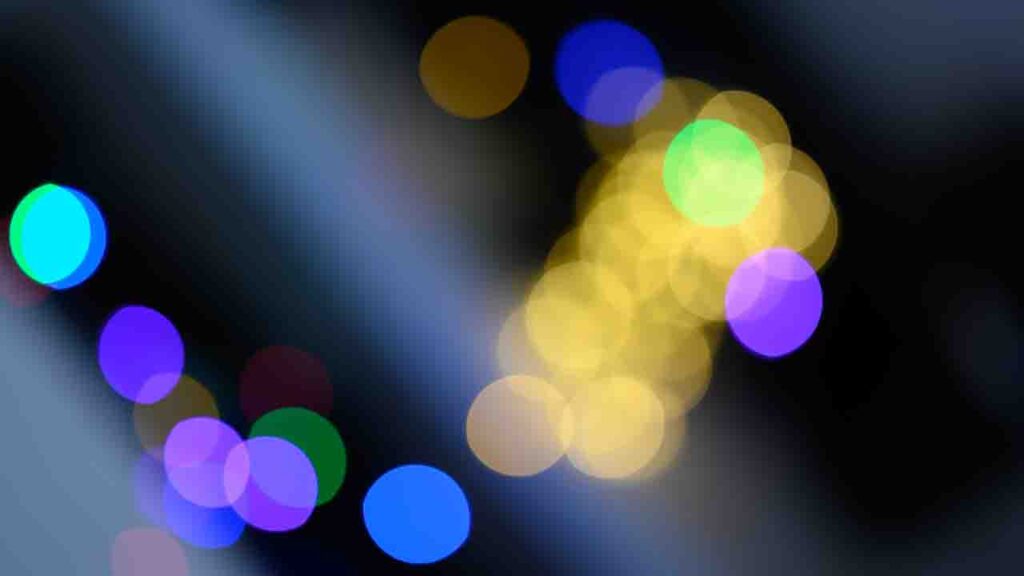
But it comes at a price, the price being the quality of the sun stars. I really don’t like the sun stars this lens produces, but I respect the prioritisation of bokeh for a portrait lens. I wish the lens producers would give us 2 sets of aperture blades – straight and rounded, and a button to select between the two.
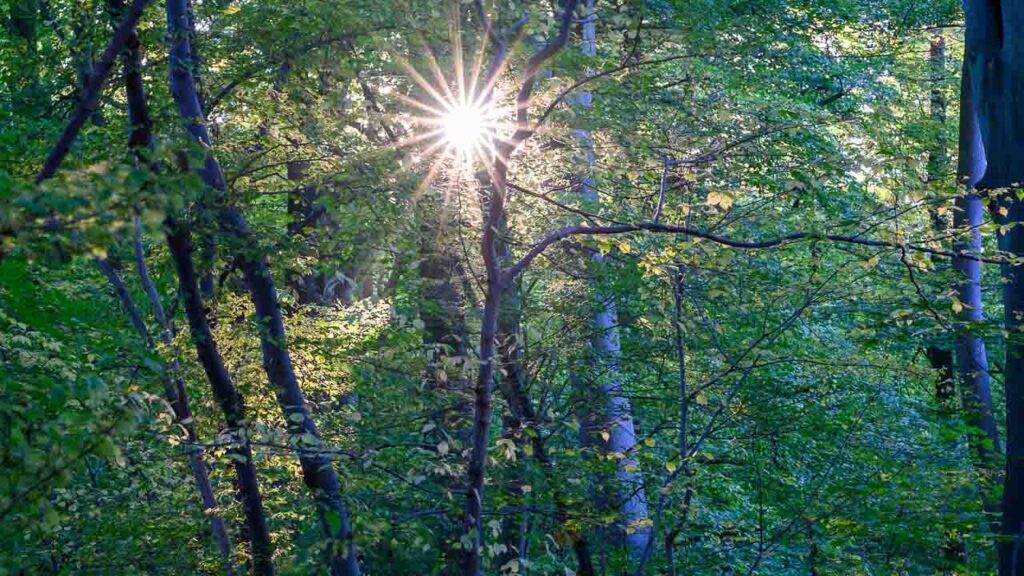
Color rendition
Colour rendition is subjective, and I am in general cautious to comment on this in a lens review. If you in general like the way Nikon lenses renders colours, then this lens will not disappoint you. You could fear that all the coating this lens had would influence the colour rendition, but as far as I can tell, this is not the case.
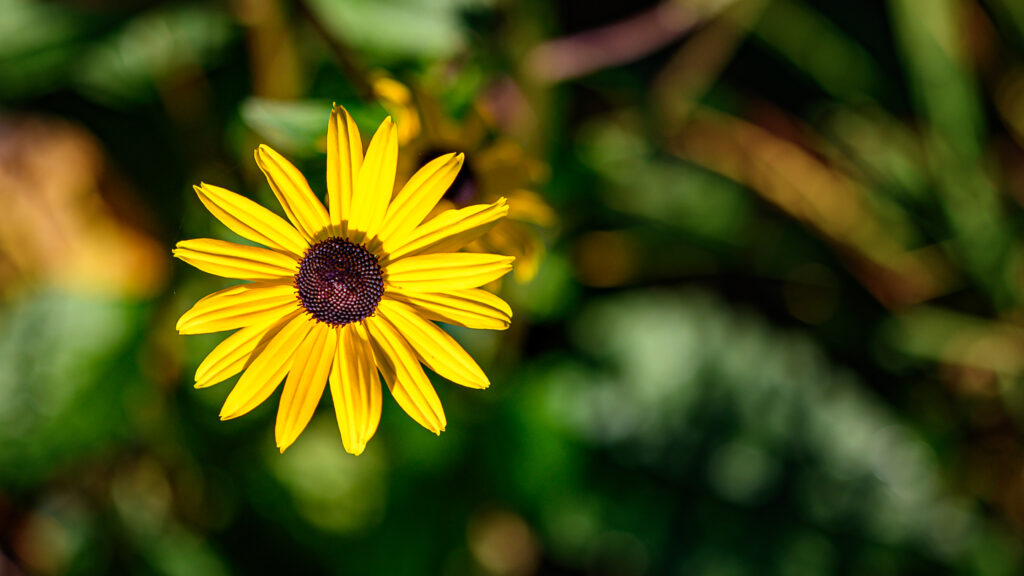
Auto focus
The auto focus is both silent and fast – maybe not as fast as you want for a wildlife lens, but for portraiture this is all you need. Nothing is fully silent, but it is very discrete, even when you shoot with continuous focus.
Conclusion
You have probably guessed that I love this lens. And that is the bottom line of this review. I think it shows that the Nikon mirrorless lenses have taken the quality of photography gear to a new level.
A phony salesman once said to me that the product quality lingers on long after the price is forgotten. I laughed at his pitch back then, but today I must admit he had a point.
Video link
Related reading
Review: TTArtisan 50mm f/1.2 lens for the Nikon APS-C Z-mount
Review: Viltrox AF 33mm f/1.4 APS-C lens for the Nikon Z-mount

